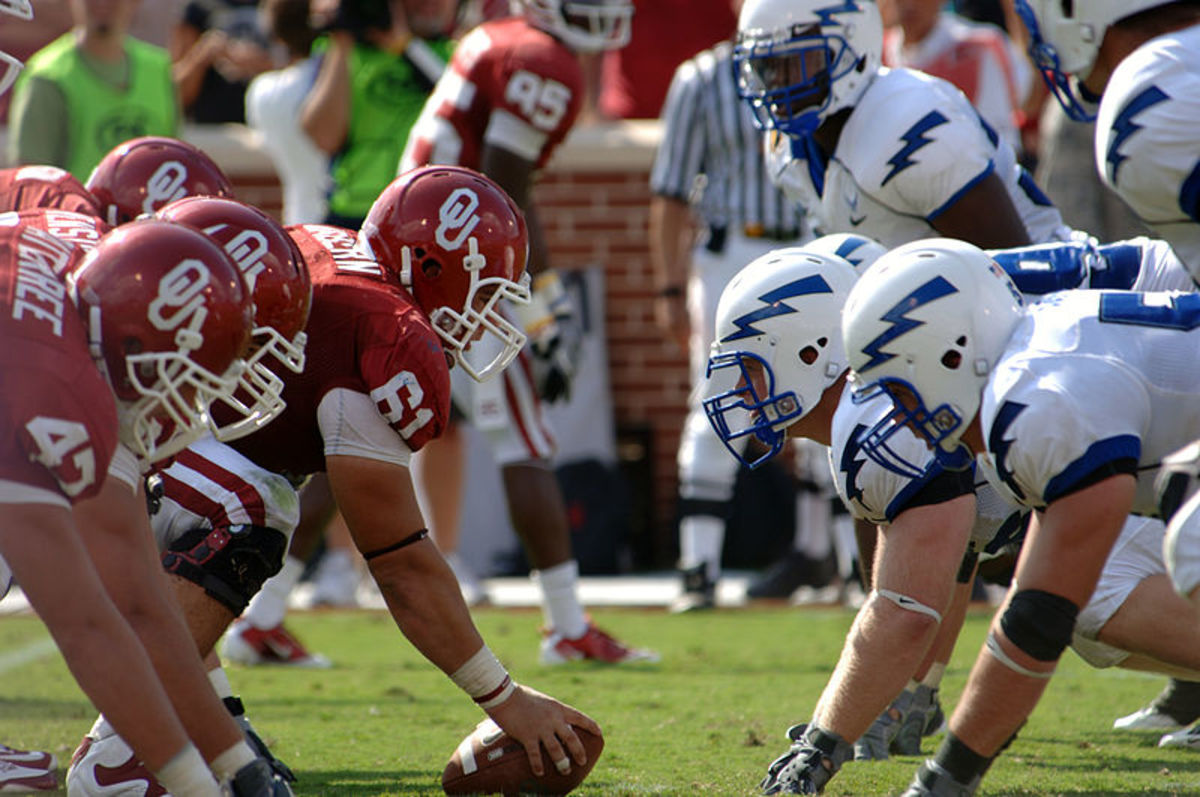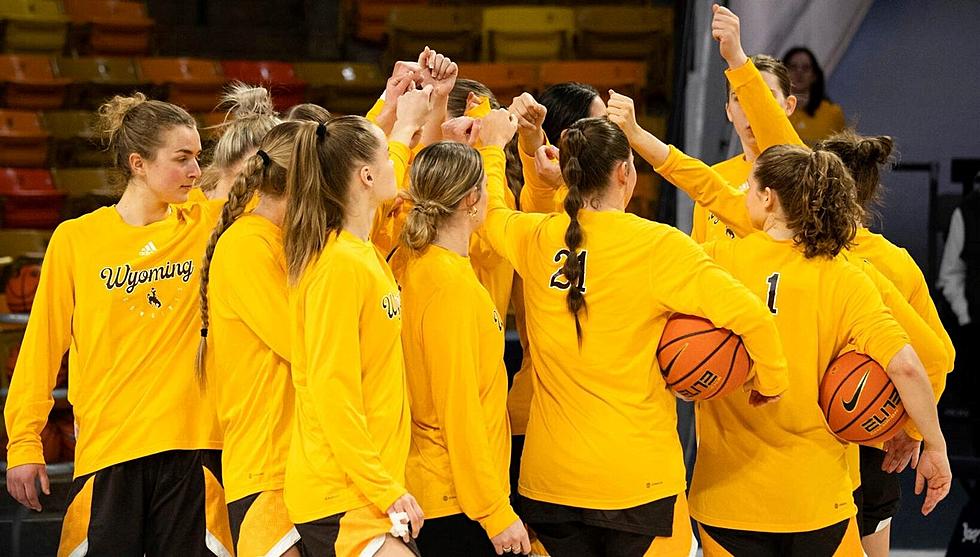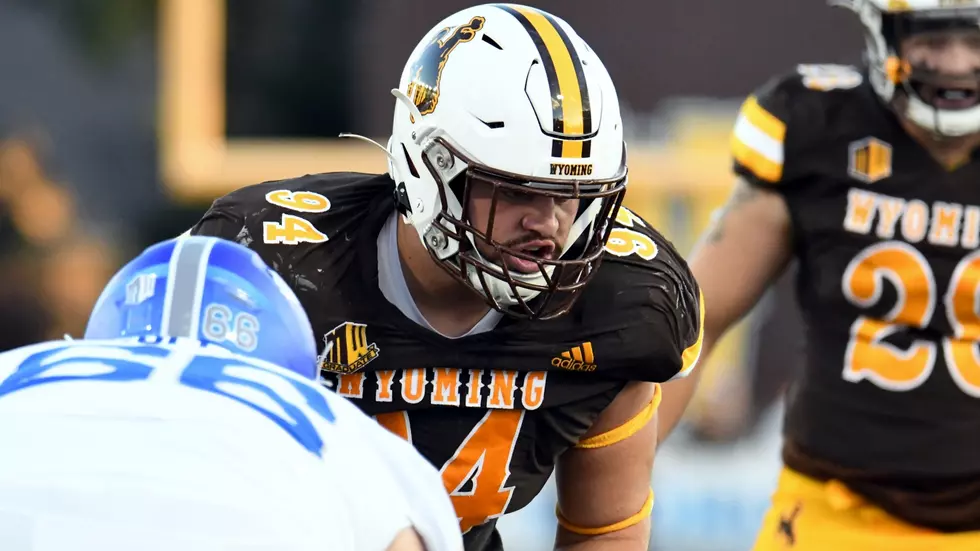
Rookies Anonymous: Falcons fly in low
Editor's note: This column is for all those who wish to learn more about the sports we all love to watch without judgement from veteran fans. As Wyoming heads down to Colorado Springs to face the USAFA Falcons, please enjoy this look at the low block culture of an option team.
The crowd settles at Falcon Stadium as the Air Force offense lines up. A six-year-old girl in the stands cocks her head with curiosity, then reaches up and tugs on her father's sleeve.
"Daddy, why is the defensive line standing so far away from our offensive one," she asks with a frown.
Her father looks down and smiles at her, answering sagely, "Well, Virginia, that's because those young men enjoy having functioning knee caps."
"Oooh," Virginia exclaims with childish realization, looking back at the field as the ball is snapped and two Air Force linemen dive forward. "So they're scared of getting hurt by our chop blocking?"
Her father's eyebrows shoot up, and he goes slightly pale. He didn't realize he'd have to have "the talk" so soon, and braces himself. He tugs at the collar of his "Go Falcons" shirt. Then, forcing as much of his knowing smile to return as he can, he hastily responds, "No no no, darling. You see, chop blocking is illegal and very dangerous. Our boys do cut blocks. Those are perfectly acceptable, as long as the defender being blocked isn't already engaged by another lineman and it's within five yards of the line of scrimmage."
"Oh," Virginia sighs. Then, making a face like someone stepped in something, she says, "That seems like some Mickey Mouse hair splitting crap to me, daddy. Who made up that garbage?"
Her father, understanding he wasn't getting away with a simple text book response, sits down on the bench and looks his daughter in the eye.
"Well, honey," he responds earnestly, "the NCAA did. That's probably why it sounds dumb. But that was sort of a compromise that I think was important to keep the triple option game alive in college football. Not to mention leveling the field for teams who are part of what's called Service Academics. That's schools like Army, Navy and our Air Force boys who have special requirements for going to their college.
"Many of our Falcons are trying to become pilots and work in air crafts, so they have size restrictions."
Putting his arm around Virginia, he points down toward the opposing bench on the sidelines. "There, you see the linemen for the other team, like number 65, and number 72?"
Virginia nods her head. He continues, "Now look at our offensive linemen with the same numbers out there."
Virginia's eyebrows furrow and she exclaims, "Our guys are so much smaller than they are. And now that I look at it, they are way smaller than the defensive lineman and line backers, too."

"Exactly, sweety," her father says, "so we can't really expect our players to go chest-to-chest with all the big guys on other teams and be effective. We've gotten better at it the past few years after the rules were changed, but we still have to use tactics that take our size into account. Often, that means low blocks.
"Now watch closely, so you can see the difference between a chop block and a cut block, hon," her father says, pointing at the Falcon's offensive line as it sets in front of the flexbone formation (see diagram), popular for the triple option.

The ball snaps back to the quarterback. The Air Force guard moves upright and engages the opposing defensive tackle. The Falcon's tackle next to him dives forward, driving his shoulder pad into the defenders thigh and folding him in half in a painful-looking way. The officials throw yellow flags, and Virginia looks at her father.
"Why are there flags, daddy? I thought you said low blocks were okay."
"Well, see," he responds, "that was a chop block, Virginia. That's illegal, and the penalty will cost us 15 yards. You see, when the guard was already blocking the defenders upper half, and then the tackle hit the same defender low, that's not allowed."
"But, if the guard had moved over to stop the line backer, and the tackle had done the same thing, moved in low and striking the defensive tackle on the thigh with his opposite shoulder and then rolling to bring the defender down, that would have been perfectly fine. And he can do that anywhere as long as it's from the front and within five yards of the line of scrimmage," he finished with a satisfied nod of his head.
:format(webp):no_upscale()/cdn.vox-cdn.com/uploads/chorus_asset/file/13108569/gtcut.jpg)
Virginia stands there, blinking hard for a moment before asking, "So that makes it less dangerous, as long as the chop... I mean cut blocks... are done by the rules?"
Her dad shifts uncomfortably, but keeps a confident tone when he says, "Well... I mean... it's hard to say since the rules were only officially changed by the NCAA in 2018. But, a study published in the Orthopaedic Journal of Sports Medicine collected injury information from two seasons before and two seasons after the NFL made the same rule change, and they concluded there was only a 16 percent decrease in knee injuries among defensive players. So I don't think it really makes that big a difference."
Virginia shrugs her shoulders and looks again at the three-yard gap between the visiting defensive line and the Falcons front five, and asks once more in exasperation, "Then why are they standing so far away from our offensive line?"
Her father smiles warmly, pats her on the head, and stands to watch the play, answering simply, "Because they don't want to get they're [expletive] knees broken by cut blocks, silly."
The End.
Note: The above is a work of illustrative narrative fiction. Any resemblance to a real situation is purely, and wildly, coincidental.
Related Stories:
More From 7220 Sports









